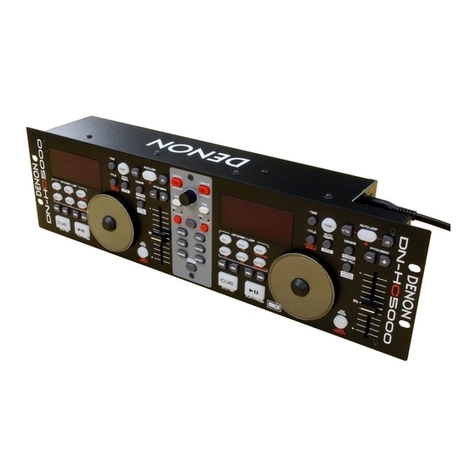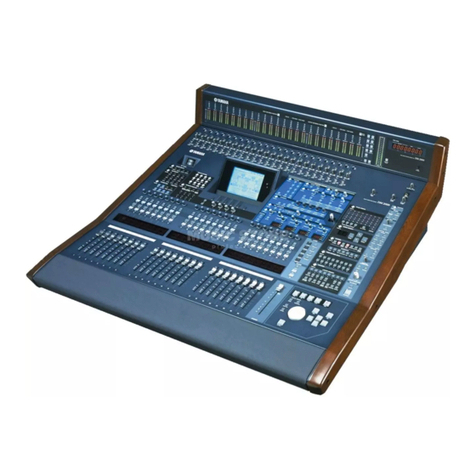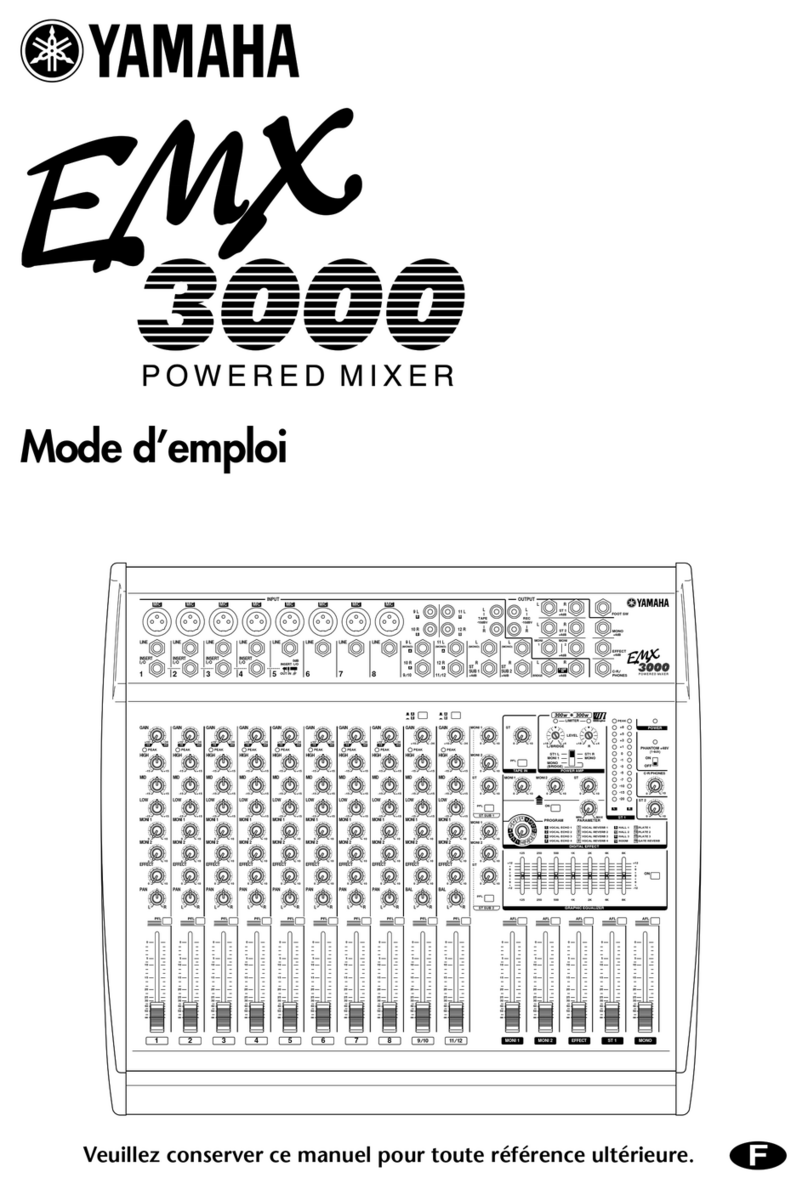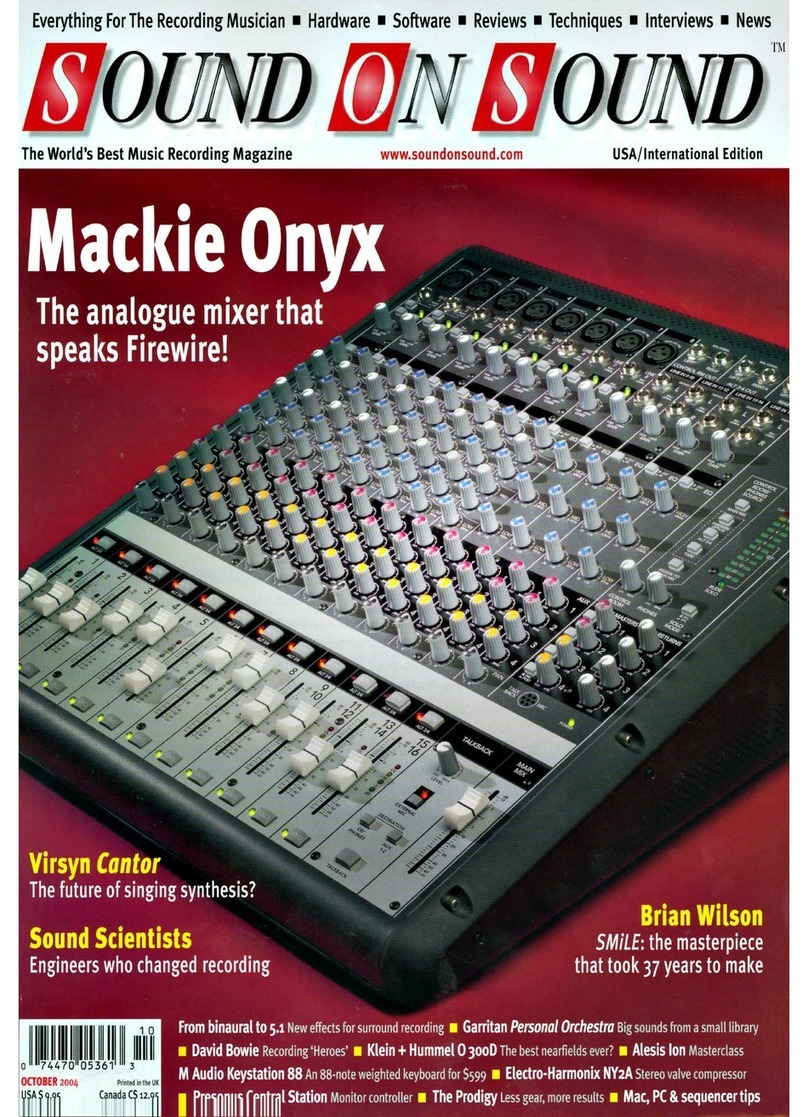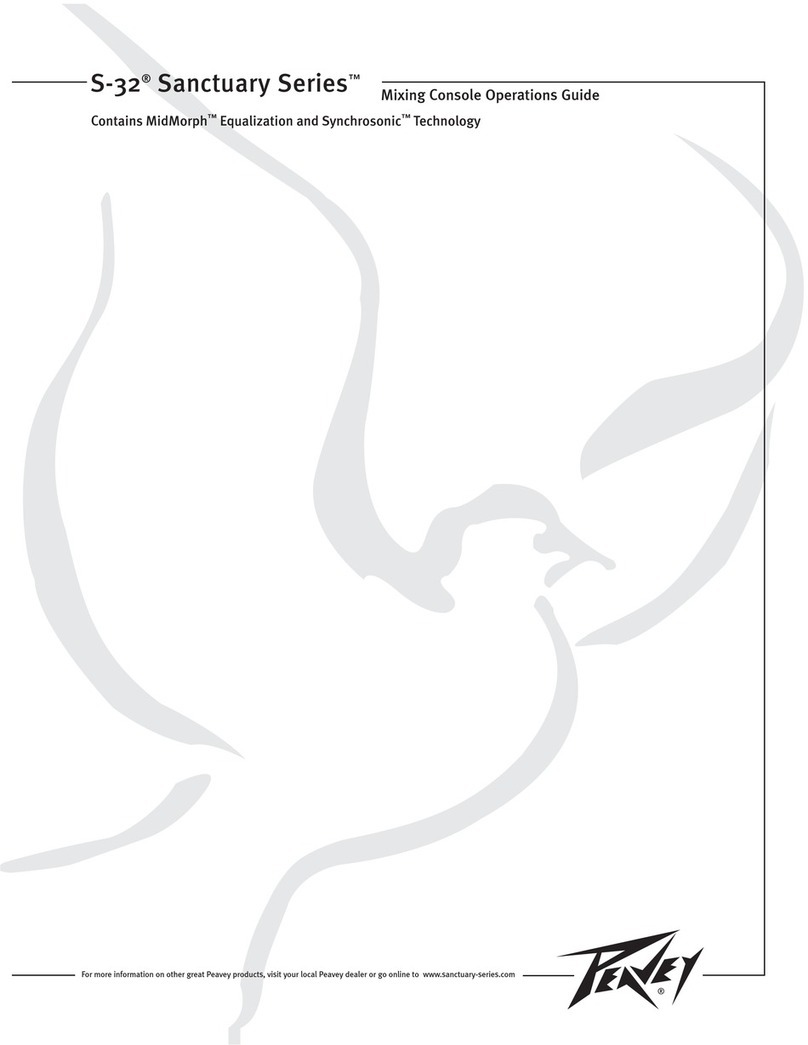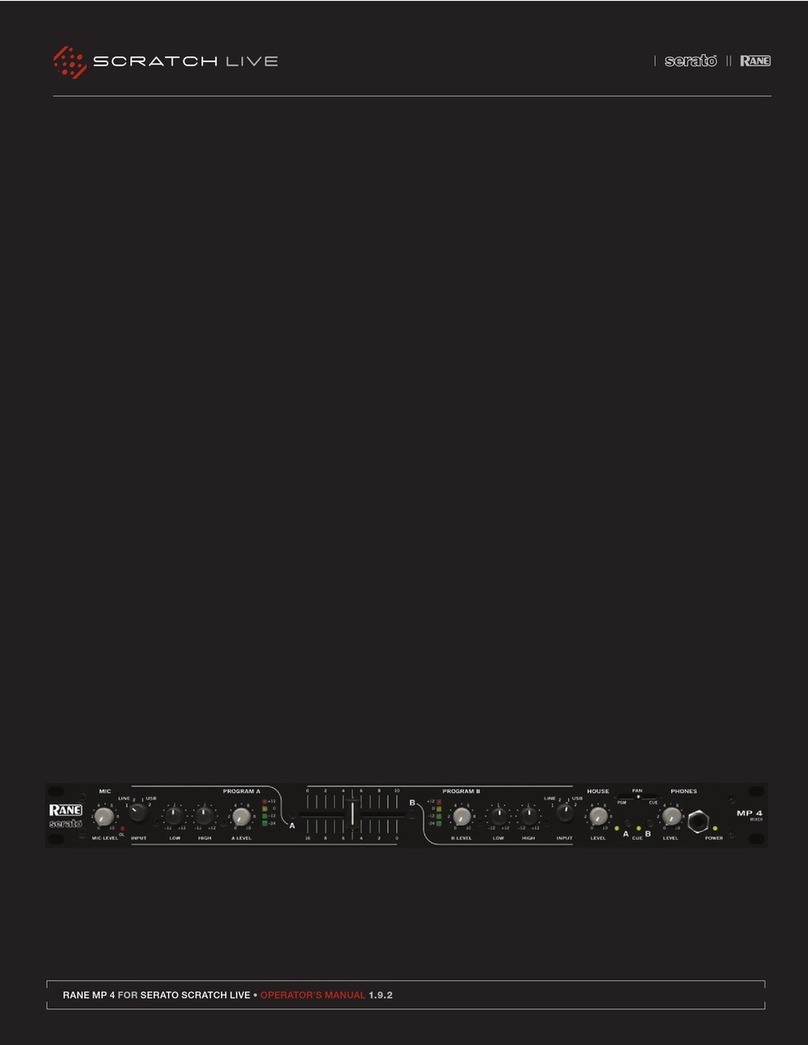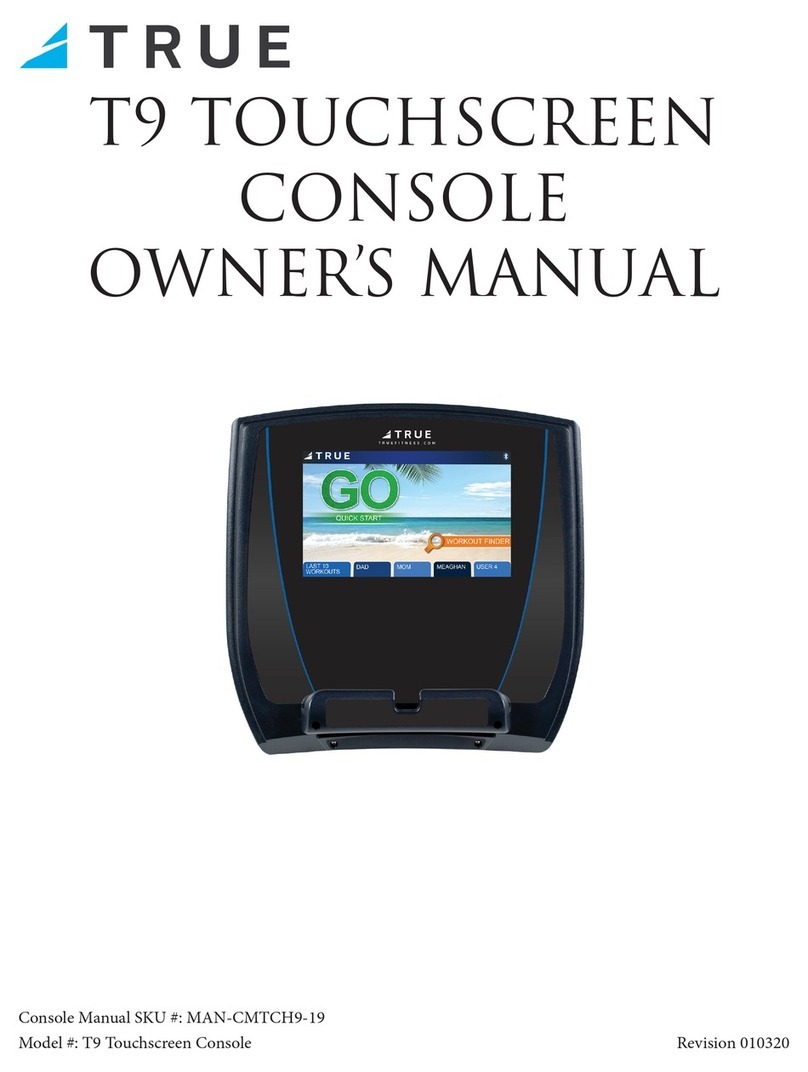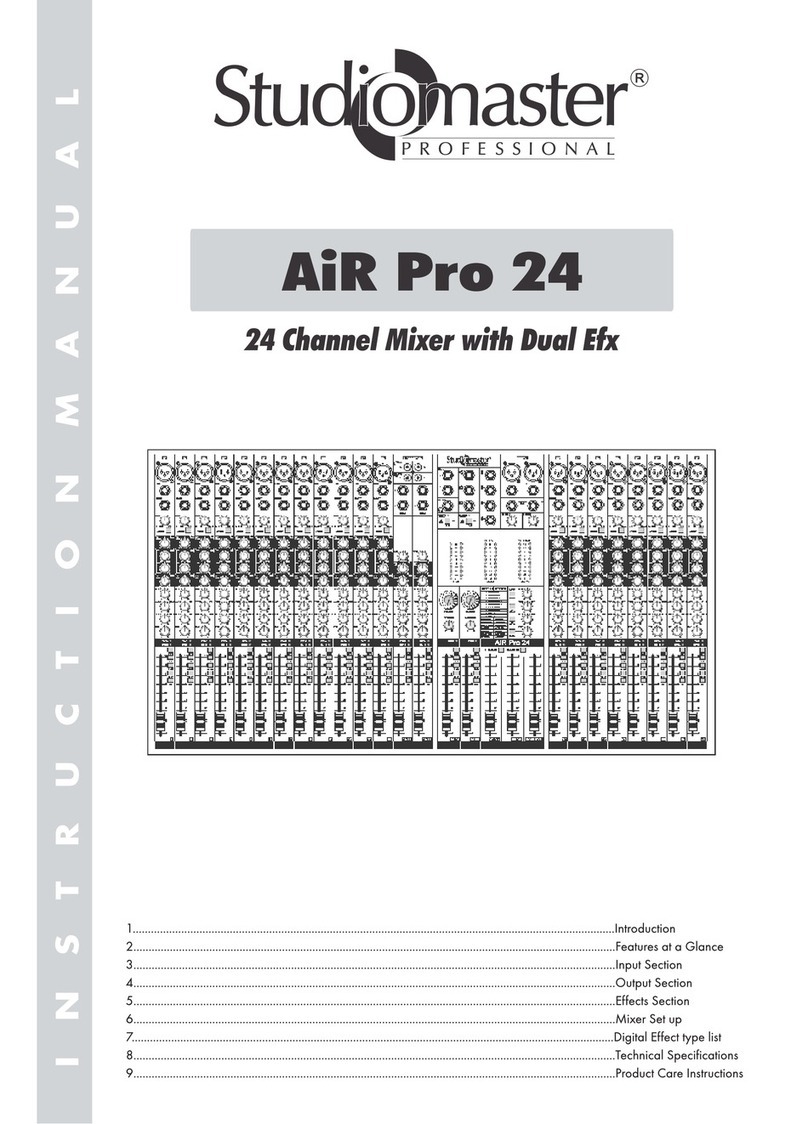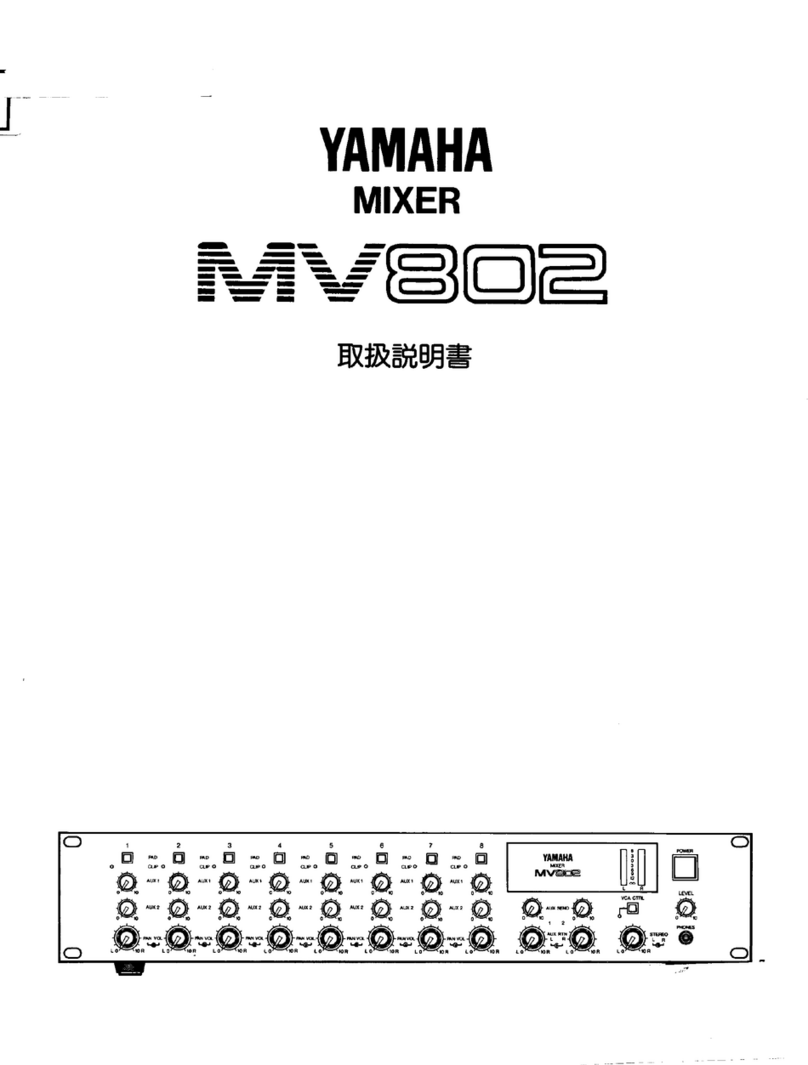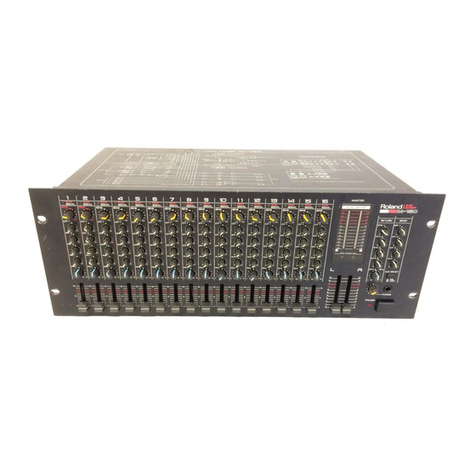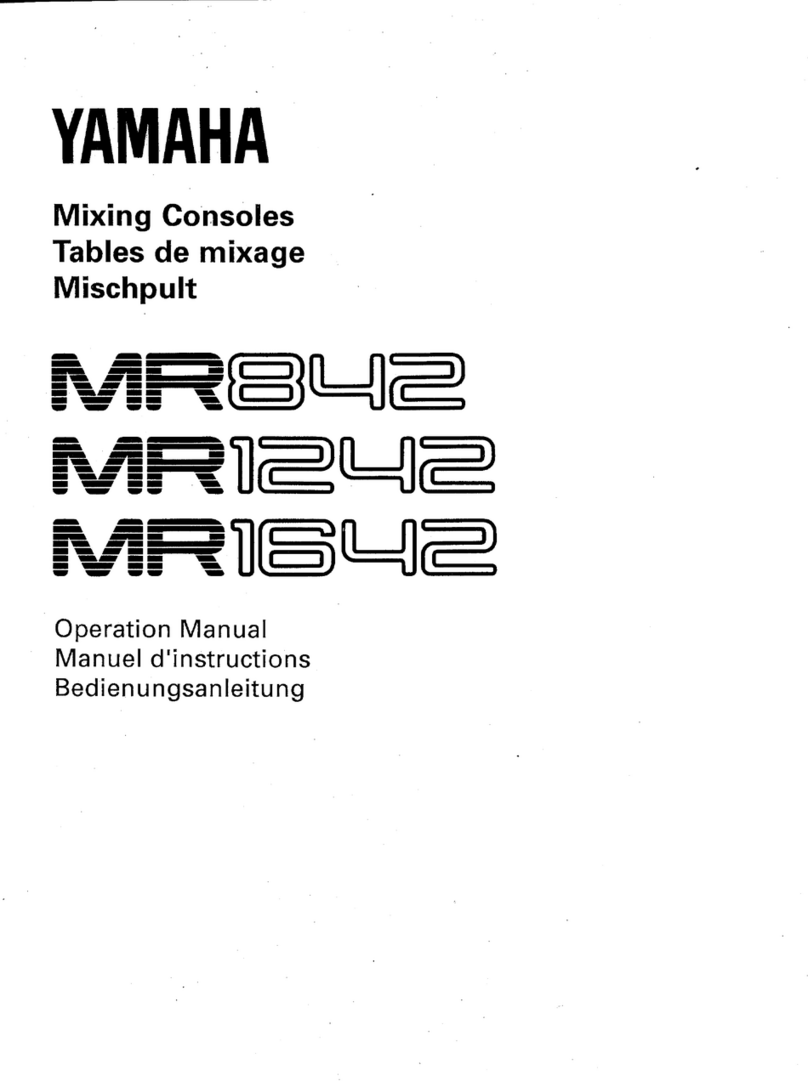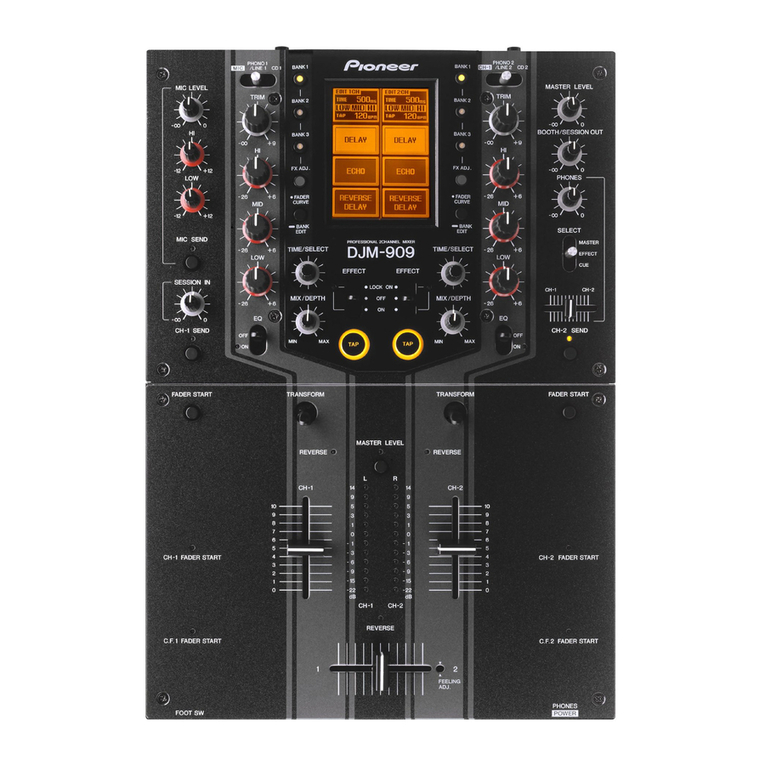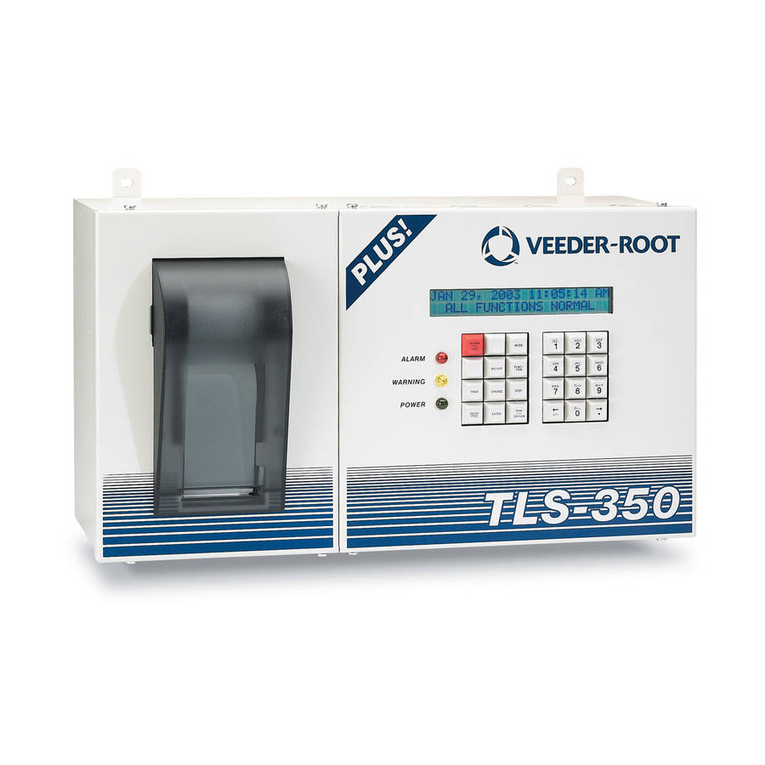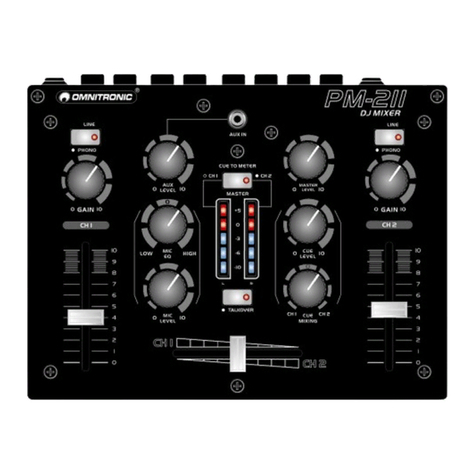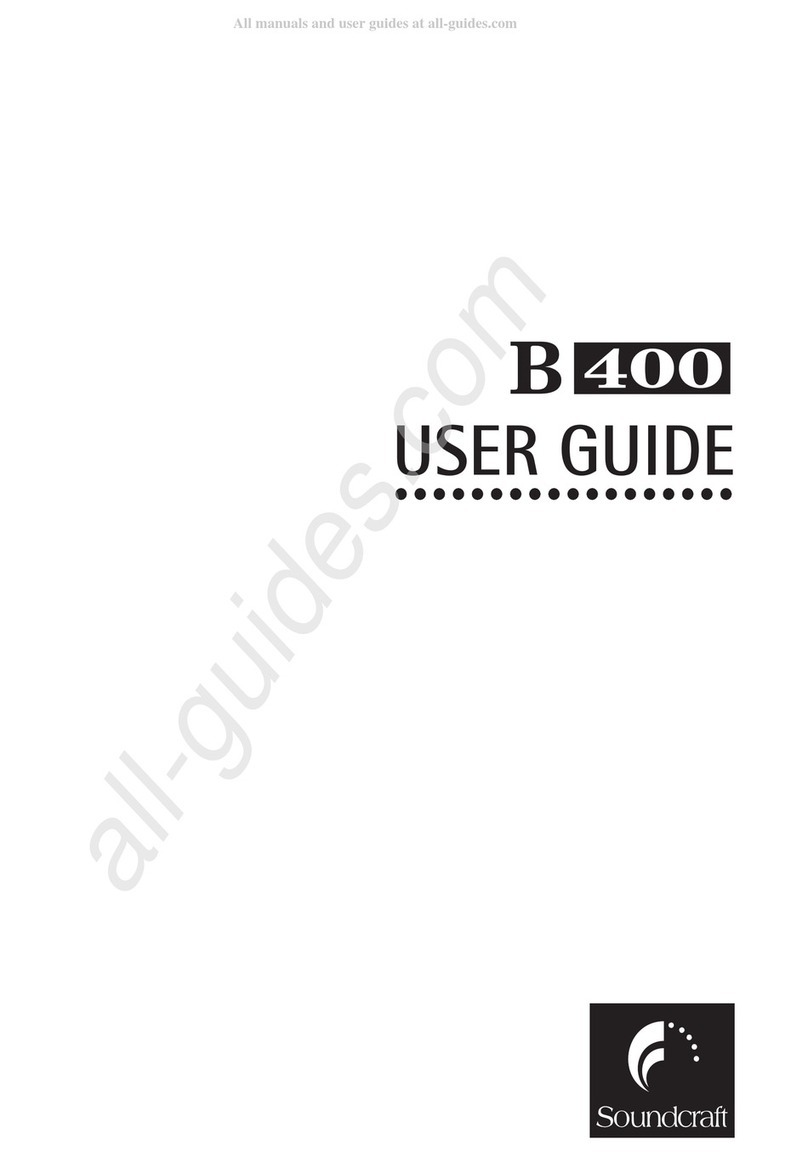Denon Professional DN-508MXA User manual

User Guide English ( 3 – 16 )
Guía del usuario Español ( 17 – 30 )
Guide d’utilisation Français ( 31 – 44 )
Guida per l’uso Italiano ( 45 – 58 )
Benutzerhandbuch Deutsch ( 59 – 72 )
A
ppendix English ( 73 – 75 )
DN-508MXA


3
User Guide (English)
Introduction
DN-508MXA is a professional 8-zone mixer and 4-zone amplifier with remote controllability via
RS-232C, RS-422, and IP. It has professional-grade audio circuitry, mic/line pad functions, full
BTL (bridge-tied load) balanced outputs, 3-band input equalization, 5-band output
equalization, priority, delay, dynamics, LoZ and HiZ speaker support, and an automatic power-
saving function. When connected to a network or router, you can use a web-based interface
to control the system, as well.
Please see this guide’s Setup chapter to learn how to integrate DN-508MXA with your audio
system, and then refer to the Operation chapter to start using DN-508MXA.
Box Contents
DN-508MXA
Euroblock Connectors
(6) 5-Pin (for the Line Outputs 1–8 and Amp Inputs 1–4)
(2) 4-Pin (for Mic/Line Inputs 1 & 2)
(4) 3-Pin (for Mic/Line Inputs 3–6)
(5) 2-Pin (for the Speaker Outputs 1–4 and Mute connector)
(2) 5-Pin with Jumper Wires (for connecting Line Output 1–4 and Amp Inputs 1–4)
Power Cable
User Guide
Safety & Warranty Manual
Support
For the latest information about this product (system requirements, compatibility information,
etc.) and product registration, visit denonpro.com.

4
Features
Front Panel
1. Power Button: Press this button to power DN-508MXA on or off.
2. Display: This screen indicates the current settings, status, etc.
3. Volume/Sel: Turn the knob to navigate or scroll through the options shown in the display, and then
press the knob to select one.
4. Menu: Press this button to switch between the Menu and the settings of the current zone in the display.
In the Menu, turn the Volume/Sel knob to navigate or scroll through the available options, and then
press the knob to select it.
5. Mute/Back: When viewing the settings of the current zone, press this button to select the Mute setting.
To mute or unmute the zone, turn the Volume/Sel knob to select Mute or Unmute, and then press it to
confirm your choice.
When in the Menu, press this button to return to the previous screen.
6. Aux In (1/8” /3.5 mm):Use a standard stereo 1/8” (3.5 mm) cable to connect an optional audio source
to this stereo input. When a cable is connected to this input, the Aux In (RCA) inputs on the rear panel
will be disabled.
7. Mic/Line Indicators: These lights will illuminate different colors to show the signal status of each
mic/line input:
•Off: The input is receiving no signal or a very low-level signal.
•Green: The input is receiving a signal at an optimal level.
•Amber: The input’s signal is very high.
•Red: The input’s signal is “peaking” (higher than 0 dB). Decrease its Gain knob on the rear panel
or decrease the volume of the source to prevent “clipping” (distortion).
8. Source Indicators: These lights will illuminate different colors to show the signal status of the aux in
and ST inputs:
•Off: The input is receiving no signal or a very low-level signal.
•Green: The input is receiving a signal at an optimal level.
•Amber: The input’s signal is very high.
•Red: The input’s signal is “peaking” (higher than 0 dB). Decrease the volume of the source to
prevent “clipping” (distortion).
9. Source Selectors: Press one of these buttons to assign or unassign that source to the currently
selected zone. When a source is assigned to the zone, its button will be lit amber. To select a zone,
press one of the Output Selectors.
10. Output Indicators: These lights will illuminate different colors to show the signal status of the line
outputs (zone outputs):
•Off: The output is sending no signal or a very low-level signal.
•Green: The output is sending a signal at an optimal level.
•Amber: The output’s signal is very high.
•Red: The output’s signal is “peaking” (higher than 0 dB). Decrease the volume of the zone to
prevent “clipping” (distortion).
11. Output Selectors: Press one of these buttons to select that zone. The button for the currently selected
zone will be lit amber.
12. Protection Indicator: These red LEDs will light when amplifier protection is engaged for the Speaker
Outputs. The LEDs correspond to Zones 1-4.
DN-508
MXA
PROTECTION
123
4
5
6
8
9
10
11
12
7
DVD
CD
Dining
Room L
Dance
Hall L
Kitchen
Dance
Hall R
Dining
Room R
Phone

5
Rear Panel
1. Power Input: Use the included power cable to connect this input to a power outlet.
2. Line Outputs: Use Euroblock connectors to connect these line-level outputs to your
loudspeakers or other audio devices. Each group of 5 connections corresponds to 2 zones.
Each zone has a hot (H) and cold (C) connector, and each pair of zones shares the ground (G)
connector. Make sure each loudspeaker is connected to the desired zone.
To send audio signal to the Speaker Outputs, use the included 5-pin Euroblock with jumper wires
to connect the Line Outputs of Zones 1-4 to the Amp Inputs of Zones 1-4.
3. Mic/Line Inputs: Use Euroblock connectors to connect your mic-level or line-level audio
sources to these inputs. Each input has a hot (H), cold (C), and ground (G) connector. Inputs 1
and 2 have an additional connector for Page Switch. Remember to adjust the Gain knob to set
the input volume level.
4. Mic/Line Gain: Turn these knobs to set the input gain for each Mic/Line Input.
5. Aux In (RCA):Use a standard stereo RCA cable to connect an optional audio source to this
stereo input. When a cable is connected to the Aux In on the front panel, these inputs will be
disabled.
6. ST Inputs: Use standard stereo RCA cables to connect line-level audio sources to these inputs.
7. Mute Connector: Use a 2-pin Euroblock connector to attach a switch to this connector. The
switch can then mute or unmute the incoming signal from all audio sources.
8. Remote Port: This port lets you connect a computer to DN-508MXA. Use a 9-pin D-Sub cable
to make this connection. You can use the computer with a third-party utility to manage DN-
508MXA via serial communication.
9. Remote Extend Port: This port lets you connect another DN-508MXA to the host device. Use a
9-pin D-Sub cable to make this connection. You can use a computer with a third-party utility to
control all connected DN-508MXA units via serial communication.
10. RS-422 Port: This port lets you connect a host device to DN-508MXA. You can then use a third-
party utility to control DN-508MXA via serial communication. Use a standard analog telephone
cable with RJ45 connectors to make this connection.
11. Ethernet Port: This port lets you connect DN-508MXA to a network. Connect this port to a
computer via a network switch or router. Alternatively, connect it directly to a computer using an
Ethernet crossover cable. This connection lets you control DN-508MXA though the web
interface.
12. Speaker Output: Use Euroblock connectors to connect these outputs to your loudspeakers at
low-impedence (LoZ), high-impedence (HiZ) or BTL (bridge-tied load). When using LoZ, each
group of 2 connections corresponds to 1 zone, for 4 total zones. When using HiZ and BTL, each
pair of groups of 2 connections corresponds to 1 zone, for 2 total zones. Each zone has a
positive (+) and negative (-) connector. Make sure each loudspeaker is connected to the desired
zone and that the wiring polarity is correct.
13. Amplifier Input: Use Euroblock connectors to connect line-level audio sources to these inputs.
Each zone has a hot (H) and cold (C) connector, and each pair of zones shares the ground (G)
connector.
To send audio signal to the Speaker Outputs, use the included 5-pin Euroblock with jumper
wires to connect the Line Outputs of Zones 1-4 to the Amp Inputs of Zone 1-4.
14. Fan: The speed of the fan adjusts automatically to cool the unit.
1
23
4
56
8
10
11
7
9
12
13
14
Other manuals for DN-508MXA
1
Table of contents
Languages:
Other Denon Professional Music Mixer manuals


